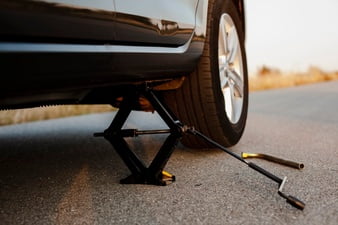
In some industrial occupations, the movement of challenging loads – lifting, pulling, or locking – can be a familiar requirement. But the manual element of this can present health and safety risks to the operator.
More and more, however, organizations are embracing technologies that can reduce these risks and maintain productivity. Jack screws are an example of this in action – a modern adaptation of growing technology that has been with us for years.
What are jack screws?
Jack screws (sometimes known as jackscrews) are a form of, which is a device that delivers motion in a straight line. In comparison, the motion of most electric motors – for example – is circular. Jack screws are quite straightforward in technical terms too. They consist of a screw affixed to their housing or machinery, which can then move in a set direction.
It’s important to remember that jack screws can come in various sizes too. Smaller sizes may be found in items such as household appliances. Larger sizes, meanwhile, can form part of an industrial or commercial system. Not only that, but you also get a choice of a ball or machine jackscrew. The main difference here is in the actual design of the screw itself.
How do jack screws work?
One other point to note when choosing a jackscrew is how it’s operated. In some applications, it might be operated by hand using a lever or handle to apply force to the screw. But there are also various jack screw options that are driven by an alternate current or direct current motor. Again, the requirements for which one is best suited to you will depend on the application.
No matter what type of jackscrew is installed, the premise is very much the same. By turning the handle or applying electro-mechanical power, the screw moves to or fro – bearing its load in whichever motion is needed. As a self-locking device, the screws remain in place and exert their force for as long as is required – or until they reach the end of their operational life.
What are jack screws used for?
Jack screws have multiple uses thanks to their varying sizes and forms. In electronics, screws are used in televisions and computers to fix D-type cable connectors in place. In this instance, their role is to provide a reliable connection between devices and cables. But it’s also possible to find jack screws used in PCBs so that other components aren’t able to move.
In industrial settings, meanwhile, jack screws are used in heavy-duty applications. This could include the lifting and lowering of vehicles in repair shops, for example. Other applications of jack screws in the industry include aviation design and maintenance; medical equipment such as dentist’s chairs; theatre sets; and any other potential application where heavy loads feature.
The benefits of using jack screws:
In terms of the benefits of using jack screws, there are several stand-out factors that work in their favor. The first is their consistency of application. Unlike a hydraulic jack that calls for a constant pressure of the fluid, jack screws can perform their task without ongoing force or power.
This also related to their self-locking capabilities, which allow the jack screw to withstand the load without any force/power being exerted. It’s a big advantage when time or cost pressures mean ongoing monitoring or operation isn’t possible.
Jack screws are versatile too. This feature does a lot to explain why they prove such a popular solution. No matter what the challenge or application, these components can be fully relied on in situations as diverse as home electronics, commercial aviation, and industrial machinery.





























